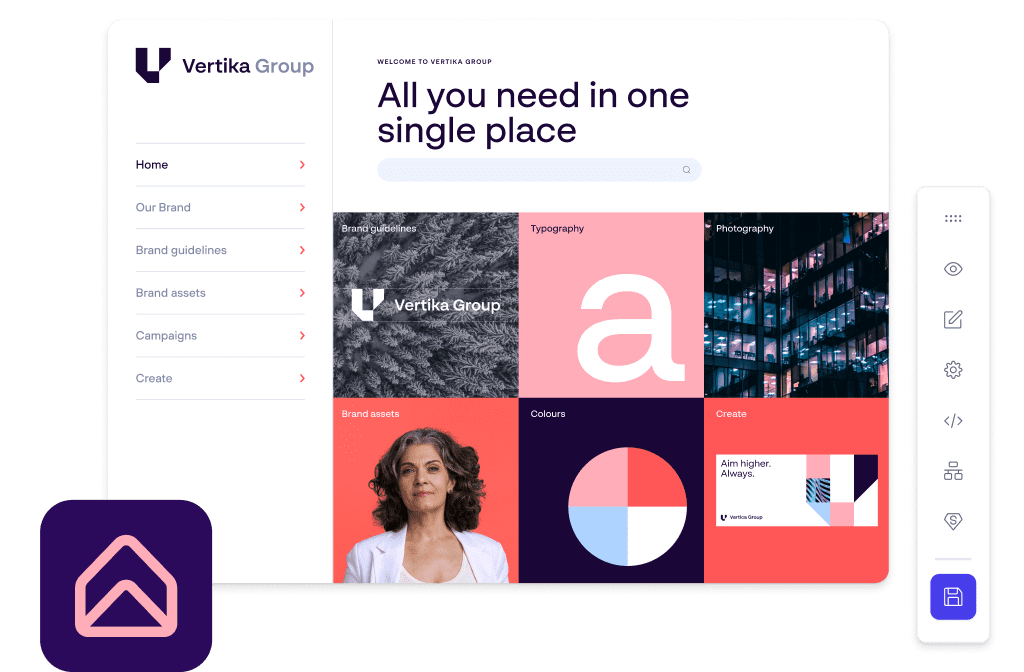The pace and pressure of marketing today can be relentless. More content, more channels, more complexity – and less time to manage it all. That’s where Digital Asset Management software comes in.
DAM software streamlines how marketers organize, access, and activate brand assets – cutting down on manual tasks, reducing risk, and helping teams deliver faster, smarter, and more consistently. Whether you’re managing global campaigns or supporting local markets, modern Digital Asset Management for marketing teams gives everyone the clarity, control, and capacity to operate at scale.
If you want to simplify managing digital assets, and free up time to be more strategic, creative, and experimental, DAM is the answer.
How Digital Asset Management for marketing supports your teams
A Digital Asset Management system is more than just a place to store files. It’s a centralized platform designed to organize, govern, and distribute brand content – everything from imagery and video to templates, logos, guidelines, and campaign materials.
But more importantly, DAM is a marketing operations engine. It removes bottlenecks, empowers teams, and ensures every asset used is on-brand and fit for purpose.
Here are five ways you can use DAM to transform your marketing operations:
1. Put an end to asset chaos
Marketing teams deal with thousands of assets – across teams, tools, and territories. Without a central system, things get messy fast. Files live on desktops, in emails, or buried in folders with names like ‘IMG_375.jpg’. It’s inefficient, risky, and unsustainable.
DAM is how you bring order to digital asset chaos. Assets are stored in a structured library with visual previews, smart filters, and searchable metadata. Everyone knows where to find what they need, and which version is current and approved.
2. Strengthen brand consistency
Consistency is critical for building band trust. DAM is critical for building consistency. Having one centralized brand portal ensures that everyone uses the same approved, up-to-date materials – from local marketers to global partners.
Guidelines, campaign kits, and creative assets can all be accessed from here, reducing errors and duplications. Teams can also use the DAM to repurpose assets for new regions, channels, or formats without compromising brand integrity.
3. Simplify collaboration and asset delivery
Marketing rarely happens in isolation. Teams rely on creatives, agencies, and internal stakeholders to produce, review, and activate content. A central DAM brand hub makes this collaboration seamless.
External partners can upload assets directly into the system. Internal teams can access what they need – within the permissions you control. Approval workflows ensure nothing goes live without sign-off.
4. Automate routine tasks
Time spent reformatting files, managing version control, or digging through email threads is time lost. Digital Asset Management for marketing teams saves you the expense by automating manual tasks your people experience every day. Some DAM software uses AI to optimize visuals across all channels or perform intelligent cropping. Result: marketers are freed from mundane, repetitive activities and can focus their efforts on high-impact work.
5. Connect your marketing ecosystem
Digital Asset Management software integrates easily with other software in your marketing stack, whether it’s CMS, CRM, PIM, or campaign management tools – and this is when DAM is at its most powerful. It means that web editors can publish directly from your central brand portal, email marketers can personalize with confidence, and ecommerce teams can instantly deploy assets at scale.
DAM software is key to successful marketing
Digital Asset Management is no longer a nice-to-have. It’s an essential part of the brand ecosystem, enabling organizations to deliver agile, on-brand, and high-performing marketing.
If your current asset management setup isn’t keeping pace, it’s time to explore what a modern DAM can unlock.
Transform your marketing with DAM
See how leading teams create and control marketing content
Transform your marketing with DAM
See how leading teams create and control marketing content
Transform your marketing with DAM

FAQs
A Digital Asset Management system is a centralized hub for storing, managing and sharing brand content. For marketers, DAM streamlines workflows, ensures on-brand asset use, and simplifies access to approved materials across teams and channels.
DAM simplifies managing digital assets by consolidating files into a searchable system with metadata, version control, and visual previews. This removes duplication, reduces time spent searching, and ensures teams use the correct version every time.
DAM systems streamline collaboration by enabling permission-based access, external uploads, and automated approval flows. Every authorized team member can review and approve content directly in the platform, reducing delays and errors.
Modern DAM solutions like Papirfly integrate with CMS, CRM, PIM, and campaign management platforms. These integrations allow assets to be deployed instantly across websites, emails, and ecommerce platforms, maximizing speed and ensuring brand control across the ecosystem.


